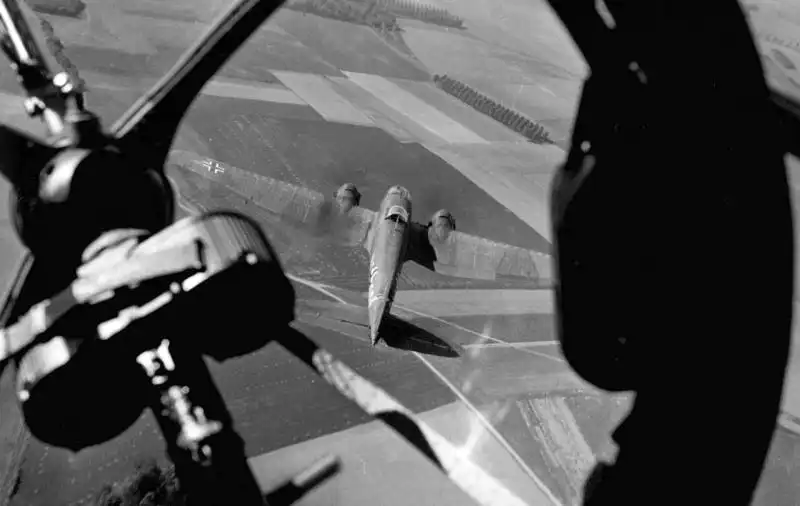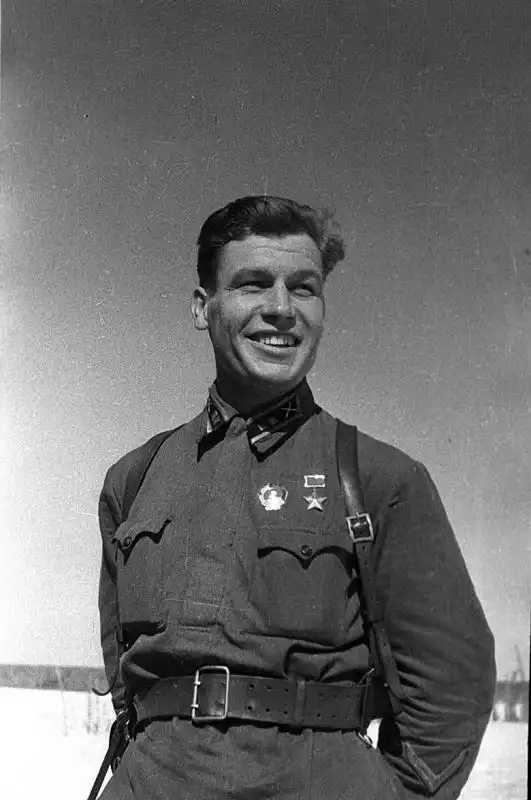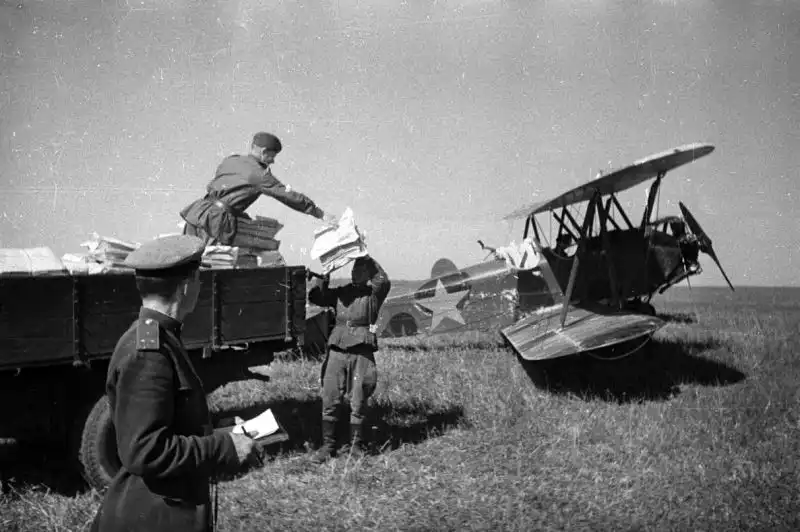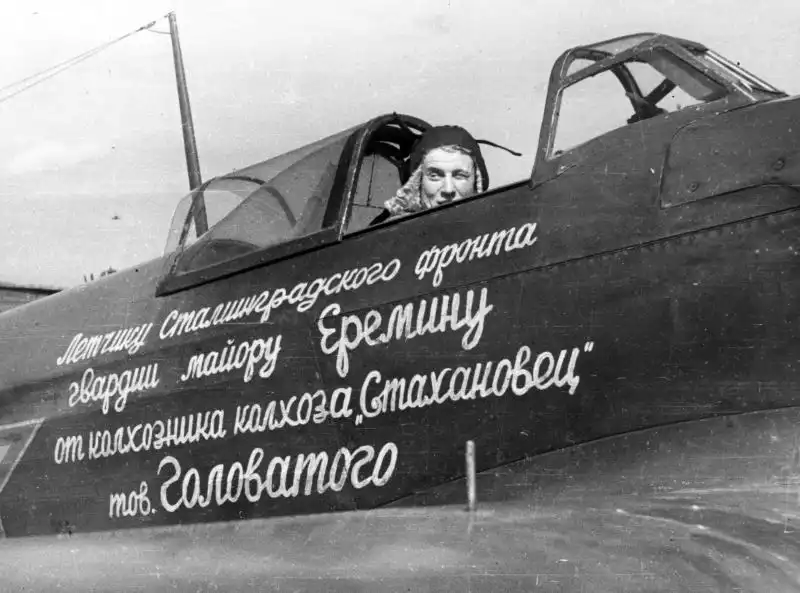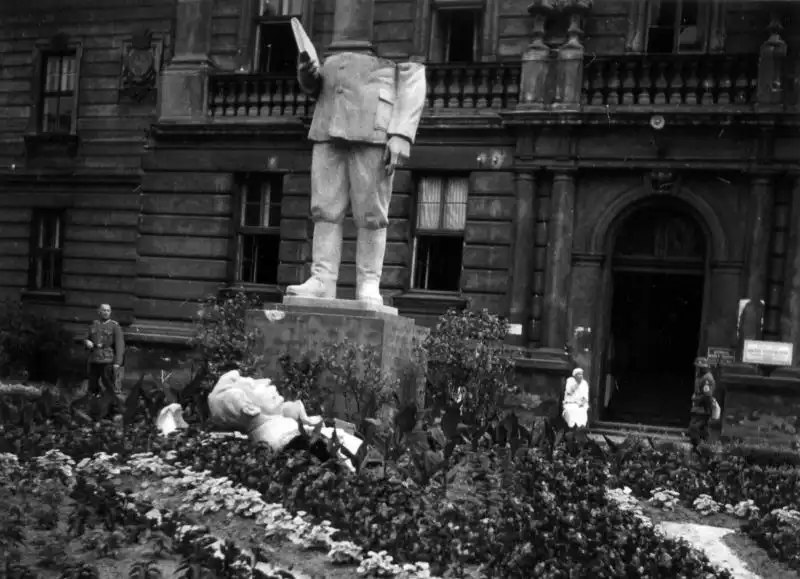Soviet Officers Examine Tiger Tank Turret Penetration after the Battle of Kursk, July 1943
October 5, 2025 - Reading time: 6 minutes
Soviet tank commanders inspect a penetration in the turret of a destroyed German Tiger tank after the Battle of Kursk, July 1943.
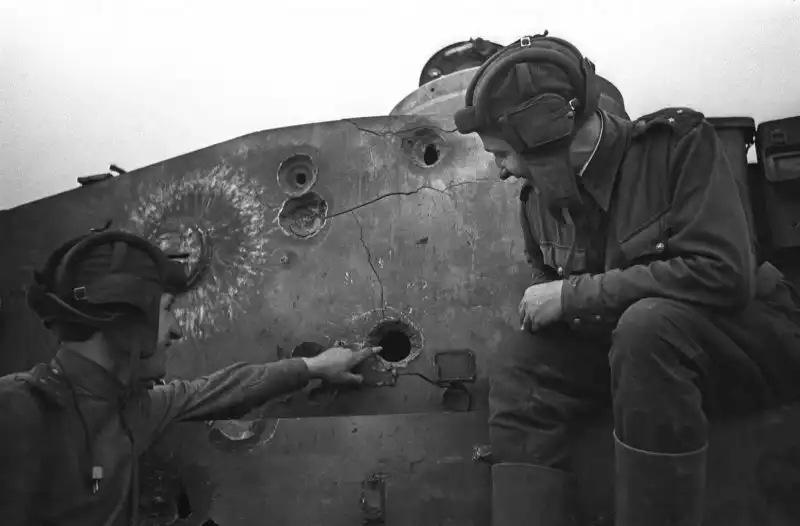
This historic World War II photograph, taken near Kursk in July 1943 by Natalya Bode, shows Soviet tank commander Lieutenant Boris V. Smelov pointing to a penetration hole in the turret armor of a destroyed German Tiger I (PzKpfw VI) heavy tank. Standing beside him is Lieutenant Viktor Likhnyakevich, who had reportedly destroyed two German tanks in his last battle.
The hole seen in the photo was caused by a standard 76 mm armor-piercing shell fired from a Soviet T-34 medium tank. This image became widely known and was used in wartime Soviet propaganda to demonstrate that even the most powerful German tanks—considered nearly invincible at the time—could be defeated by the Red Army’s standard T-34.
Battle of Kursk and the Tiger Myth
The Battle of Kursk (July 5–August 23, 1943) was one of the largest armored clashes in history and marked the decisive turning point on the Eastern Front. The German Army introduced its newest heavy tanks—the Tiger and Panther—believing their superior firepower and armor would restore the offensive advantage.
However, Soviet tactics, defensive depth, and numerical superiority proved decisive. Although the Tiger I was indeed formidable, photographs like this one were circulated to boost morale and counter the myth of German invincibility.
The Men Behind the Photo
-
Lieutenant Boris Vasilyevich Smelov (b. 1920, Navoloki, Ivanovo Region) served in the Red Army from 1941. By 1943, he commanded a T-34 tank in the 257th Tank Battalion, 108th Tank Brigade, 9th Tank Corps, 1st Belorussian Front. He was killed in action during the Dnieper River crossing on October 19, 1943, and posthumously awarded the Order of the Patriotic War, 1st Class.
-
Lieutenant Viktor Leonidovich Likhnyakevich (b. 1919, Kyiv) was a battalion commander in the same brigade. He was killed in combat on February 18, 1945, and buried in Germany.
Propaganda and Reality
Experts note that the Tiger in this photograph shows numerous shell impacts from different calibers, suggesting it may have been used for ballistic testing or as a training example. Nevertheless, the image remains one of the most famous Soviet depictions of battlefield victory and technological defiance against the Wehrmacht’s most feared armor.
Technical photo data:
📍 Location: Kursk, USSR
📅 Date: July 23, 1943
📝 Event: Battle of Kursk — inspection of destroyed German Tiger tank
📷 Author: Natalya Bode
- Battle of Kursk Tiger tank photo
- Soviet T-34 penetration Tiger I
- Red Army tank commanders 1943
- Natalya Bode war photographer
- Destroyed German heavy tank WWII
Category
Search
Categories
- Unidentified WWII Photos (14)
- World War II Photos 1937 (1)
- World War II Photos 1938 (1)
- World War II Photos 1939 (3)
- World War II Photos 1940 (5)
- World War II Photos 1941 (103)
- World War II Photos 1942 (59)
- World War II Photos 1943 (52)
- World War II Photos 1944 (77)
- World War II Photos 1945 (41)
- WWII and Postwar Photos 1946 (1)

